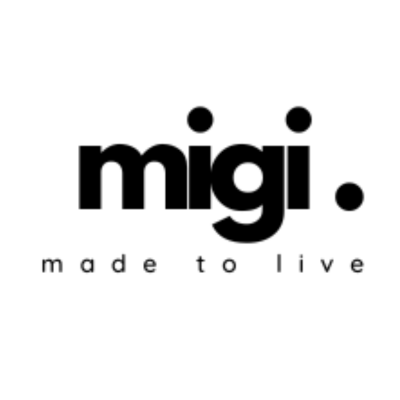
How to organize storage bins
Share
Article Summary:
- Assess what items you need to store and their specific requirements, such as size, weight, and frequency of access, to choose the right storage bins.
- Choose storage bins made from suitable materials like plastic or metal, considering factors such as durability, weather resistance, and ease of movement.
- Utilize creative strategies such as color coding, labeling, and stacking to maximize space and ensure easy access to stored items.
Organizing storage bins can transform cluttered spaces into streamlined, functional areas that make it easy to find what you need when you need it. Whether you're tackling a messy garage, a chaotic closet, or a busy playroom, having a systematic approach to organizing your storage bins is essential for maintaining order and maximizing space. With the right strategies, you can create an efficient system that not only enhances accessibility but also promotes a sense of calm in your environment. In this guide, we’ll explore practical steps for assessing your storage needs, selecting the right bins, implementing effective labeling techniques, and maintaining an organized system over time. By following these tips, you'll be well on your way to achieving a clutter-free space that reflects your personal style and meets your organizational goals.
Assessing your storage needs
Assessing your storage needs is the first crucial step in organizing your storage bins effectively. Start by evaluating the space you have available and the items you need to store. Take a thorough inventory of everything that requires organization, whether it's seasonal clothing, toys, office supplies, or craft materials. This will help you understand the volume and types of items you’re dealing with, allowing you to make informed decisions about how to proceed.

Shop our Beverage Cooler at MiGi Designs
Next, categorize your items based on their purpose and frequency of use. For example, consider grouping similar items together, such as books, games, or holiday decorations. This categorization will not only streamline the organization process but also make it easier to find what you need later on. As you sort through your belongings, be honest about what you truly need and use. This is a great opportunity to declutter; if you find items that are broken, outdated, or no longer serve a purpose, consider donating or recycling them.
Once you have a clear understanding of what you need to store and how much space is required for each category, think about the best types of storage bins for your specific needs. Consider factors such as size, material, and accessibility. For instance, transparent bins can help you quickly identify contents without opening each one, while stackable bins can maximize vertical space in smaller areas.
Additionally, evaluate how often you'll need to access these items. Frequently used items should be stored in easily accessible locations, while seasonal or rarely used items can be placed in less accessible areas. By taking the time to assess your storage needs thoroughly, you'll create a solid foundation for an organized system that not only meets your current requirements but can also adapt to future changes in your belongings. This thoughtful approach will ultimately save you time and frustration as you work toward a more organized and functional space.
Choosing the right storage bins
Choosing the right storage bins is essential for creating an organized and functional space that meets your specific needs. Start by considering the type of items you plan to store. Different materials and designs are better suited for various purposes. For example, plastic bins are durable and often waterproof, making them ideal for storing items in damp areas like basements or garages. Fabric bins, on the other hand, can add a softer touch to a room and are great for lightweight items such as clothing or toys.
Next, think about the size and shape of the bins. It’s important to select bins that fit well in your available space while accommodating the volume of items you need to store. Measure your shelves or storage areas to ensure that the bins you choose will fit comfortably without wasting space. Additionally, consider whether you need stackable bins, which can help maximize vertical space, or bins with lids for keeping dust out and maintaining organization.
Accessibility is another key factor in choosing storage bins. If you’ll be accessing items frequently, opt for bins that are easy to open and close, such as those with snap-on lids or open-top designs. Transparent bins can also be beneficial, as they allow you to see the contents at a glance without having to dig through multiple containers.
Labeling is an important aspect of organization, so consider selecting bins that are easy to label. Some bins come with built-in label holders or clear areas where you can attach labels directly. This feature makes it simple to identify contents quickly and helps maintain organization over time.
Finally, aesthetics should not be overlooked. Choose storage bins that complement your home’s decor and contribute to a cohesive look in your space. With a wide variety of colors, patterns, and styles available, you can find options that not only serve a practical purpose but also enhance the overall ambiance of your environment.
By carefully selecting the right storage bins based on material, size, accessibility, labeling features, and aesthetics, you’ll create an organized system that is both functional and visually appealing. This thoughtful approach will make it easier to maintain order in your space while ensuring that everything has its designated place.
Effective labeling techniques
Effective labeling techniques are crucial for maintaining an organized storage system and ensuring that everyone in the household can easily find and return items to their designated places. Start by choosing a labeling method that suits your style and needs. You can opt for traditional paper labels, which can be handwritten or printed, or use digital label makers for a more polished look. Consider using clear, easy-to-read fonts and contrasting colors to enhance visibility.
When labeling bins, be specific about the contents. Instead of generic labels like "Toys" or "Books," try to provide more detail, such as "Action Figures," "Board Games," or "Children's Storybooks." This specificity helps users quickly locate what they need without having to rummage through multiple containers. For bins that hold seasonal items or infrequently used supplies, consider adding a date or season to the label to remind you when to access them.
In addition to labeling the front of bins, consider using color coding as an effective organizational strategy. Assign specific colors to different categories or family members, making it easy to identify where items belong at a glance. For example, you might use blue labels for sports equipment, green for arts and crafts supplies, and red for holiday decorations. This visual cue can simplify the organization process and make cleanup more intuitive.
For added flexibility, consider using removable labels or dry-erase markers on bins that may change content frequently. This allows you to update labels without needing to replace them entirely, making it easier to adapt your organization system as your needs evolve.
Finally, ensure that your labeling system is consistent throughout your storage areas. This uniformity helps everyone in the household understand the organization scheme and reinforces good habits around returning items to their proper places. By implementing these effective labeling techniques, you’ll create a clear and efficient storage system that enhances accessibility and encourages responsibility in maintaining an organized environment.
Creative organization strategies
Creative organization strategies can transform a cluttered space into a well-ordered environment that is both functional and visually appealing. One effective approach is to think vertically. Utilize wall space by installing shelves or pegboards to store items off the floor and create more room for movement. This not only maximizes storage but also adds an element of decor to the room, allowing you to showcase items like books, plants, or decorative boxes while keeping essentials easily accessible.

Shop our Lego Buckets at MiGi Designs
Another strategy is to repurpose everyday items as storage solutions. For example, old jars can be used to hold small items like craft supplies, buttons, or office materials. Decorative baskets can serve as stylish storage for blankets or toys, blending functionality with aesthetics. Using furniture with built-in storage, such as ottomans or benches that open up for additional space, can also help keep your area organized while providing extra seating.
Incorporating multi-functional furniture is another creative way to maximize organization. Consider using a coffee table with drawers or a storage trunk that can double as a seating option. This allows you to keep frequently used items close at hand while minimizing visible clutter.
Utilizing clear bins and containers can enhance organization by allowing you to see contents at a glance. This transparency reduces the time spent searching for items and encourages good habits in returning things to their designated places. For added flair, consider labeling these containers with fun graphics or colors that match your decor.
Additionally, establishing designated zones within your space can help streamline organization. Create specific areas for different activities—such as a reading nook with books and comfortable seating, an arts and crafts corner with supplies neatly arranged, or a play area with toys grouped by type. By organizing items according to their use and location, you not only make it easier to find what you need but also encourage engagement in various activities.
Finally, involve the whole family in the organization process. Encourage children to participate by assigning them specific tasks related to their belongings. This not only teaches responsibility but also fosters a sense of ownership over their space. By implementing these creative organization strategies, you’ll cultivate an environment that promotes efficiency and creativity while making it easier to maintain order in your home.
Maintaining an organized system
Maintaining an organized system is essential for ensuring that your space remains clutter-free and functional over time. The key to long-term organization is consistency and regular upkeep. Start by establishing a routine for reviewing and reorganizing your storage areas. Set aside time weekly or monthly to assess the contents of your bins and shelves, ensuring that everything is in its designated place and that items are not accumulating unnecessarily. This proactive approach prevents clutter from building up and helps you stay on top of any changes in your storage needs.
Another important aspect of maintaining organization is developing good habits around returning items to their proper places after use. Encourage everyone in the household to adopt this practice by making it a part of your daily routine. For example, after playtime, set aside a few minutes for children to help put away toys and materials, reinforcing the idea that organization is a shared responsibility. You might even create a fun cleanup game or song to make the process more engaging for younger family members.
Regularly reassess your storage solutions as well. As your needs evolve—whether due to changing seasons, new hobbies, or growing children—it’s important to adapt your organization system accordingly. This might mean swapping out seasonal bins, updating labels, or even investing in new storage solutions that better fit your current lifestyle. Flexibility is key; don’t hesitate to modify your approach if something isn’t working or if you find yourself struggling to maintain order.
Incorporating visual reminders can also help keep your organization system on track. Consider using charts or checklists that outline where items belong or how often certain areas should be tidied up. Placing these reminders in visible locations can serve as helpful prompts for everyone in the household.
Lastly, celebrate small victories along the way. Acknowledging the effort put into maintaining an organized system can motivate everyone to continue practicing good habits. Whether it’s enjoying a tidy space together or rewarding the family with a fun activity after a successful cleanup, recognizing achievements fosters a positive attitude toward organization.
